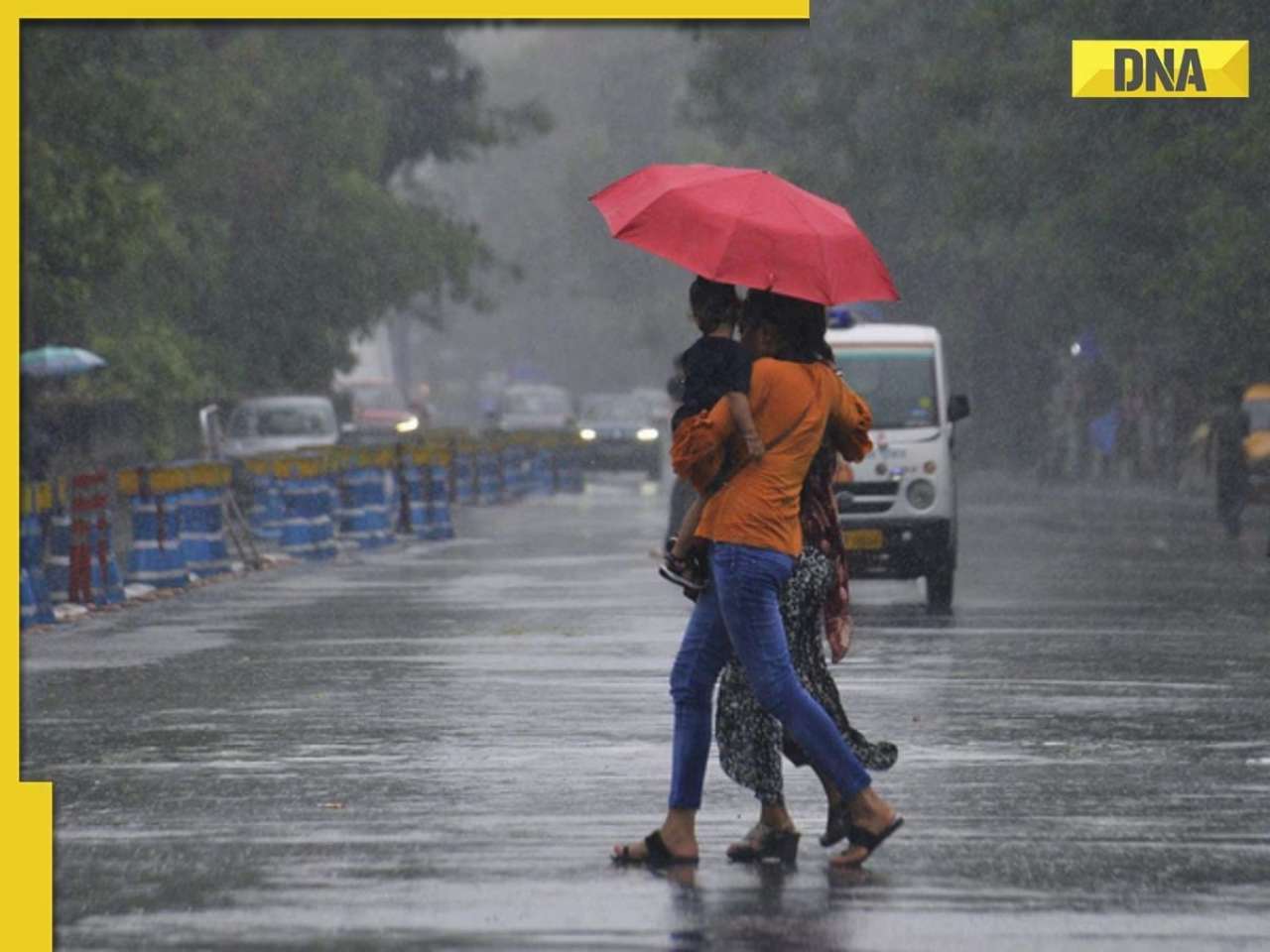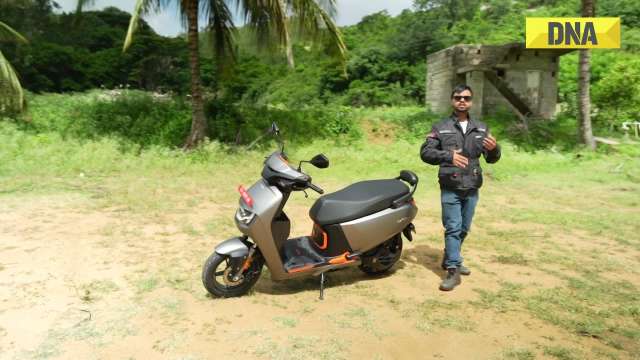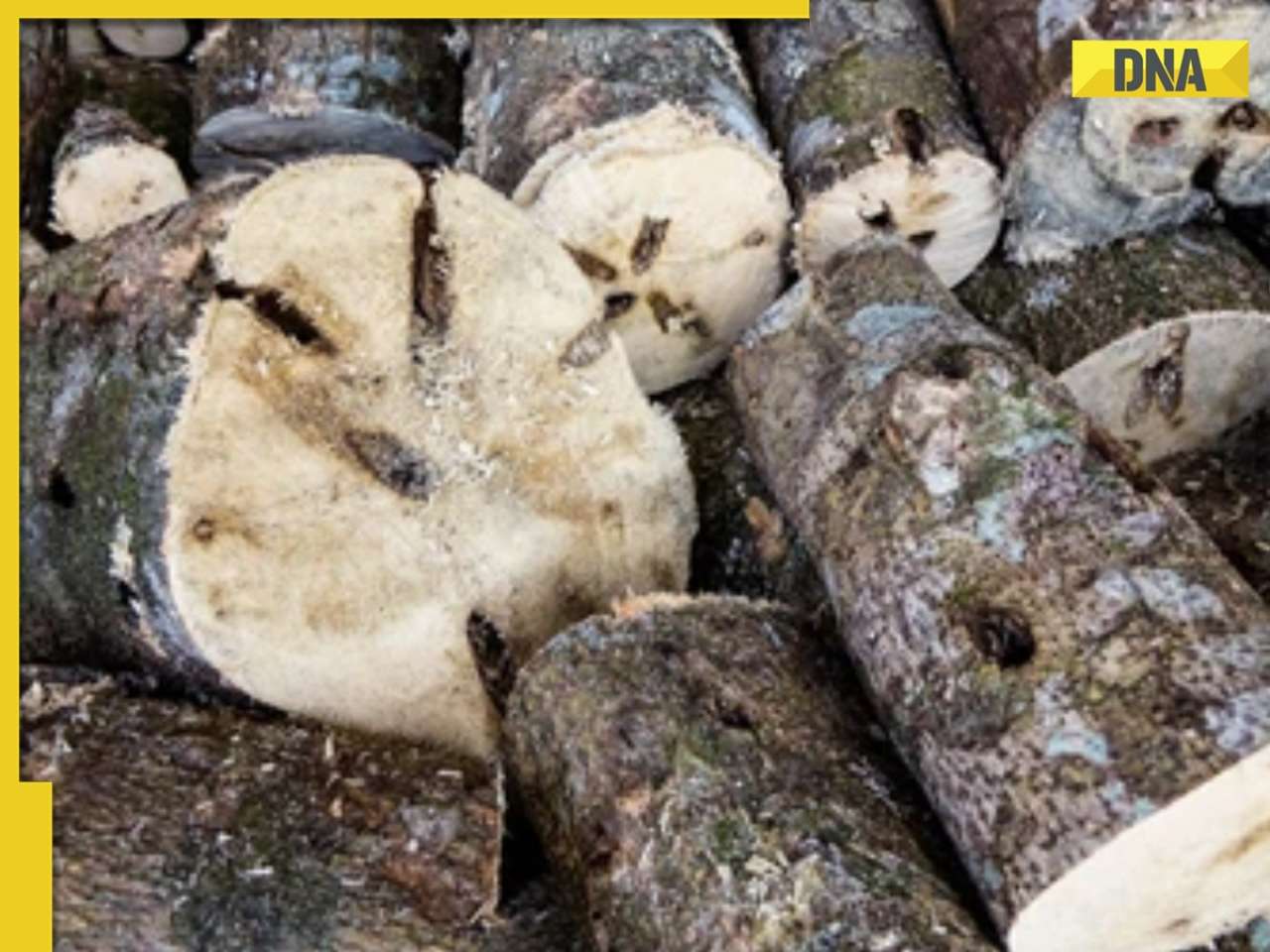Ancient Greek historian Thucydides was the first to suggest in the 5th century BC in his book 'History of the Peloponnesian War' that tsunamis were related to 'submarine earthquakes'.
Tsunami Wave (File Image)
Tsunami waves have hit the Pacific Region islands from Japan to Russia to Hawaii Island to New Zealand, causing devastation on the coasts of the islands dotting the Pacific Ocean Rim. The alarm bells for a tsunami were set ringing after a strong earthquake measuring 8.8 on the Richter Scale struck Kamchatka, the Far Eastern region of Russia. With this, the moot question that has cropped up is, what is a tsunami? How does a tsunami originate? Why and how does it become devastating?
What is tsunami?
Tsunami is a Japanese language word that can be translated as 'harbor wave.' It is a series of waves caused by the displacement of a large volume of water, generally in the ocean or a large lake. The tsunami waves are different from ocean waves. While the ocean waves are caused by wind or tides, which are in turn generated by the gravitational pull of the Moon and the Sun, a tsunami is generated by the displacement of water from a large event. So, what displaces a large volume of water? Tsunamis can be triggered by earthquakes, volcanic eruptions, and underwater explosions, including detonations, landslides, glacier calvings, meteorite impacts, and other disturbances above or below water.
How different are tsunami waves?
The tsunami waves are completely different from the sea waves, which appear as breaking waves. A tsunami wave may instead initially resemble a rapidly rising tide. Tsunamis are made up of a series of waves, with periods ranging from minutes to hours. These waves arrive in a so-called "wave train," which has heights of tens of metres. Ancient Greek historian Thucydides was the first to suggest in the 5th century BC in his book 'History of the Peloponnesian War' that tsunamis were related to 'submarine earthquakes.' A tsunami was recorded for the first time in 479 BC, when it occurred in the Greek colony of Potidaea and was caused by an earthquake.
Can tsunamis be predicted?
A tsunami cannot be predicted precisely even if the magnitude and the epicenter of an earthquake are known. As geologists, oceanographers, and seismologists study each earthquake by analyzing factors, they can issue a tsunami warning. However, an automated system can provide warnings immediately after an earthquake is noticed. This system uses bottom pressure sensors, attached to buoys, which monitor the pressure of the overlying water column.
Find your daily dose of All
Latest News including
Sports News,
Entertainment News,
Lifestyle News, explainers & more. Stay updated, Stay informed-
Follow DNA on WhatsApp. Viral video: After Aniruddhacharya, Premanand sparks new controversy, comments on girls: 'Jab chaar purush se milne ke aadat ho gayi hai, toh...'
Viral video: After Aniruddhacharya, Premanand sparks new controversy, comments on girls: 'Jab chaar purush se milne ke aadat ho gayi hai, toh...' 'We're negotiating with India...': US President Donald Trump after declaring 25% tariff plus penalty
'We're negotiating with India...': US President Donald Trump after declaring 25% tariff plus penalty  Meet woman, who studied 8 hours a day to fulfill IAS dream, cracked UPSC exam on 3rd attempt with AIR...; know about her preparation strategy and more
Meet woman, who studied 8 hours a day to fulfill IAS dream, cracked UPSC exam on 3rd attempt with AIR...; know about her preparation strategy and more Delhi weather: Heavy rain lashes Delhi-NCR again, IMD predicts thunderstorm today
Delhi weather: Heavy rain lashes Delhi-NCR again, IMD predicts thunderstorm today Donald Trump announces US-Pakistan deal to develop 'massive' oil reserves in Pakistan, says they might sell to 'India some day'
Donald Trump announces US-Pakistan deal to develop 'massive' oil reserves in Pakistan, says they might sell to 'India some day' Tata Harrier EV Review | Most Advanced Electric SUV from Tata?
Tata Harrier EV Review | Most Advanced Electric SUV from Tata? Vida VX2 Plus Electric Scooter Review: Range, Power & Real-World Ride Tested!
Vida VX2 Plus Electric Scooter Review: Range, Power & Real-World Ride Tested! MG M9 Electric Review | Luxury EV with Jet-Style Rear Seats! Pros & Cons
MG M9 Electric Review | Luxury EV with Jet-Style Rear Seats! Pros & Cons Iphone Fold: Apple’s iPhone Fold Could Solve Samsung’s Biggest Foldable Problem | Samsung Z Fold 7
Iphone Fold: Apple’s iPhone Fold Could Solve Samsung’s Biggest Foldable Problem | Samsung Z Fold 7 Trump News: Congress Seeks Answers On Trump's Alleged Mediation In Operation Sindoor
Trump News: Congress Seeks Answers On Trump's Alleged Mediation In Operation Sindoor Who is Mira Murati? Former OpenAI CTO who rejected Mark Zuckerberg-led Meta's whopping Rs 8,700 crore offer to join...
Who is Mira Murati? Former OpenAI CTO who rejected Mark Zuckerberg-led Meta's whopping Rs 8,700 crore offer to join... Mukesh Ambani plans BIG move as Reliance Consumer in talks to acquire majority stake in...
Mukesh Ambani plans BIG move as Reliance Consumer in talks to acquire majority stake in... Meet man, Indian-origin executive, who once worked at Accenture, now set to lead Air New Zealand as...
Meet man, Indian-origin executive, who once worked at Accenture, now set to lead Air New Zealand as... Good news! Amid TCS layoffs, Narayana Murthy's Infosys to hire 20000 freshers in...
Good news! Amid TCS layoffs, Narayana Murthy's Infosys to hire 20000 freshers in... PM KISAN 20th installment: PM Modi to release funds on THIS date, check eligibility and other details
PM KISAN 20th installment: PM Modi to release funds on THIS date, check eligibility and other details Ravi Dubey-Sargun Mehta begin shooting for their new project in Varanasi on Shravan Somwar; SEE PICS
Ravi Dubey-Sargun Mehta begin shooting for their new project in Varanasi on Shravan Somwar; SEE PICS Aneet Padda’s dreamy pastel pink saree from Saiyaara with Ahaan Panday is all over your mind? Get her look for just Rs...
Aneet Padda’s dreamy pastel pink saree from Saiyaara with Ahaan Panday is all over your mind? Get her look for just Rs... Nita Ambani, Isha Ambani embrace natural beauty at Vikas Khanna’s iconic New York restaurant, see pics
Nita Ambani, Isha Ambani embrace natural beauty at Vikas Khanna’s iconic New York restaurant, see pics When Life Gives You Tangerines, The Glory and other gripping K‑dramas that drew inspiration from real-life events
When Life Gives You Tangerines, The Glory and other gripping K‑dramas that drew inspiration from real-life events Raksha Bandhan 2025: Top 5 getaways to celebrate sibling bond
Raksha Bandhan 2025: Top 5 getaways to celebrate sibling bond Delhi weather: Heavy rain lashes Delhi-NCR again, IMD predicts thunderstorm today
Delhi weather: Heavy rain lashes Delhi-NCR again, IMD predicts thunderstorm today Good news for customers, government is rolling out NEW reforms in Bank laws, will be effective from...
Good news for customers, government is rolling out NEW reforms in Bank laws, will be effective from... IAS Rinku Singh Rahi transferred day after doing sit-ups in front of lawyers to admit...
IAS Rinku Singh Rahi transferred day after doing sit-ups in front of lawyers to admit... 2 Army personnel dead, several injured as boulder falls on convoy vehicle in Ladakh
2 Army personnel dead, several injured as boulder falls on convoy vehicle in Ladakh Amit Shah's BIG statement in Rajya Sabha, says, 'Even today, Pakistan able to do terror attacks but...'
Amit Shah's BIG statement in Rajya Sabha, says, 'Even today, Pakistan able to do terror attacks but...' Meet woman, who studied 8 hours a day to fulfill IAS dream, cracked UPSC exam on 3rd attempt with AIR...; know about her preparation strategy and more
Meet woman, who studied 8 hours a day to fulfill IAS dream, cracked UPSC exam on 3rd attempt with AIR...; know about her preparation strategy and more CBSE Class 10, 12 Compartment Exams result expected on...; here's how you can download it
CBSE Class 10, 12 Compartment Exams result expected on...; here's how you can download it Meet woman, a DU graduate, sister of a Chartered Accountant, who cleared UPSC exam on her third attempt with AIR..., she is...
Meet woman, a DU graduate, sister of a Chartered Accountant, who cleared UPSC exam on her third attempt with AIR..., she is... Meet woman, who lost her home in 2004 tsunami, cracked UPSC exam twice, is sister of IPS officer, currently posted as...
Meet woman, who lost her home in 2004 tsunami, cracked UPSC exam twice, is sister of IPS officer, currently posted as... Meet man, whose father sold his house to fund his son's education, later cracked UPSC exam at the age of 23 in first attempt, his rank was..., he is from...
Meet man, whose father sold his house to fund his son's education, later cracked UPSC exam at the age of 23 in first attempt, his rank was..., he is from... Maruti Suzuki's e Vitara set to debut electric market at Rs..., with range of over 500 km, to launch on...
Maruti Suzuki's e Vitara set to debut electric market at Rs..., with range of over 500 km, to launch on... This is world’s most expensive wood, cost of 1kg wood is more than gold, its name is..., is found in...
This is world’s most expensive wood, cost of 1kg wood is more than gold, its name is..., is found in... This luxury car is first choice of Indians, even left BMW, Jaguar, Audi behind in sales, it is...
This luxury car is first choice of Indians, even left BMW, Jaguar, Audi behind in sales, it is... Kia India unveils Carens Clavis: Check features, design changes, price and more; bookings open on...
Kia India unveils Carens Clavis: Check features, design changes, price and more; bookings open on... Tesla CEO Elon Musk launches most affordable Cybertruck, but it costs Rs 830000 more than older version, it is worth Rs...
Tesla CEO Elon Musk launches most affordable Cybertruck, but it costs Rs 830000 more than older version, it is worth Rs...










)
)
)
)
)
)
)
)
)
)
)
)
)
)
)
)










